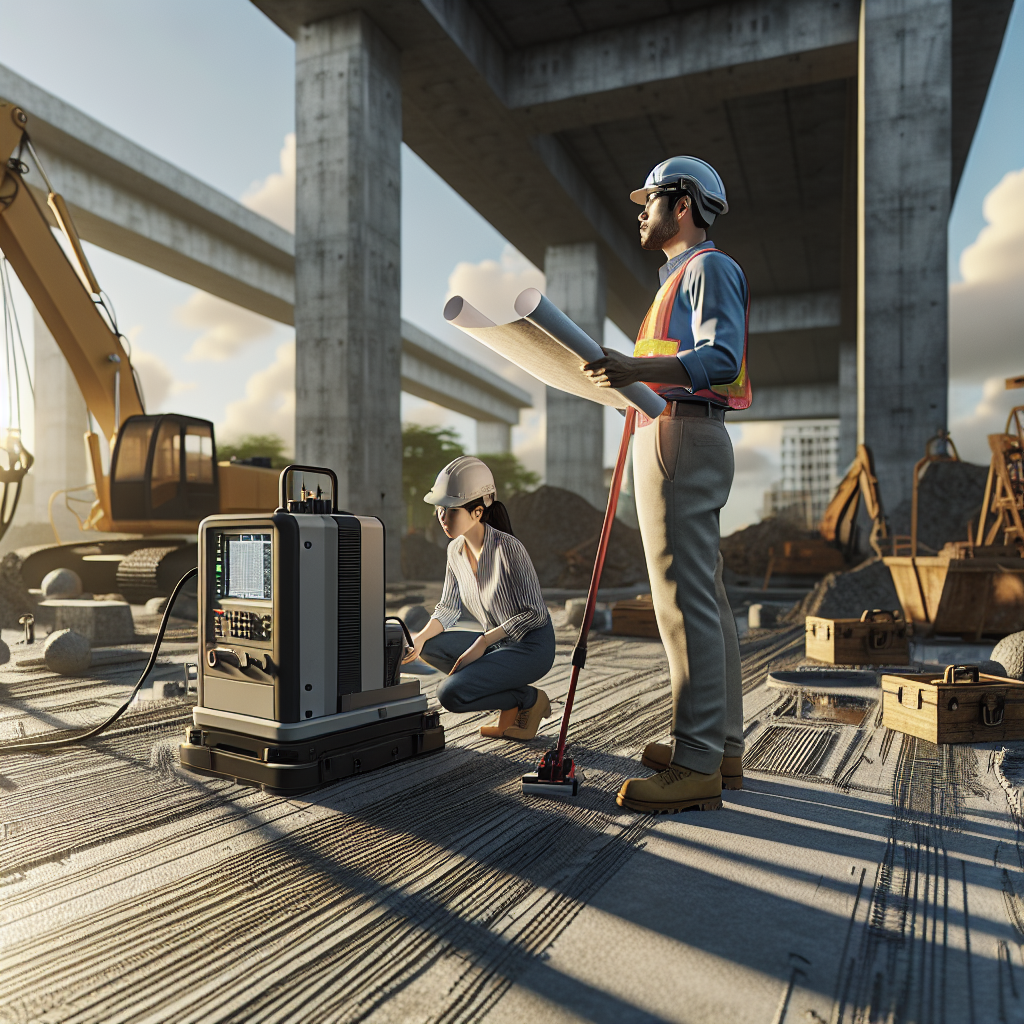In the bustling metropolis of Sydney, construction and infrastructure development are constant endeavors. With the need for precision and safety at an all-time high, advancements in concrete scanning technology have become a game-changer in the city’s construction sector.

Understanding Concrete Scanning
Concrete scanning is not just a routine inspection method; it’s a technological marvel that has transformed the way we perceive and work with concrete structures. Traditionally, inspecting concrete involved invasive methods that were time-consuming, costly, and often risky. But with the advent of concrete scanning, things have taken a significant turn for the better.
The Evolution of Concrete Scanning
The roots of concrete scanning can be traced back to its humble beginnings. Early techniques involved simple tools and handheld devices, but the relentless pursuit of innovation has led us to the sophisticated technology we have today. The journey from manual probing to high-frequency radar and Ground Penetrating Radar (GPR) has been nothing short of remarkable.
Key Components of Concrete Scanning
Concrete scanning relies on cutting-edge equipment and technology. Ground Penetrating Radar (GPR) and electromagnetic scanners are the stars of the show. These devices emit electromagnetic waves or radar signals, which bounce back after interacting with materials within the concrete. By analyzing these signals, professionals can detect voids, reinforcement bars, and even subsurface anomalies.
Applications of Concrete Scanning in Sydney
Concrete scanning sydney finds applications across various sectors in Sydney. From construction sites to infrastructure maintenance and archaeological excavations, its versatility is unparalleled. Let’s delve into some real-life scenarios where concrete scanning plays a pivotal role.
In construction projects, precise knowledge of what lies beneath the concrete surface is crucial. Concrete scanning helps identify rebar positions, post-tension cables, and other hidden obstacles, ensuring safe and efficient drilling or cutting. It significantly reduces the risk of accidents and project delays.
For infrastructure maintenance in a city as vast as Sydney, scanning technology aids in inspecting bridges, tunnels, and other critical structures. It allows engineers to assess the integrity of concrete without causing damage. This proactive approach ensures the safety of these vital structures and saves both time and money.
Benefits of Using Concrete Scanning Technology
The adoption of concrete scanning technology in Sydney comes with a myriad of benefits. Firstly, it drastically reduces the need for destructive testing. In the past, core drilling and excavation were common practices, but they were invasive and often led to costly repairs. Concrete scanning eliminates the guesswork, minimizing damage and downtime.
Moreover, the precision of concrete scanning technology ensures that projects stay within budget. It helps avoid unexpected setbacks, such as hitting rebar or encountering voids. Additionally, the improved safety it offers cannot be understated. By knowing exactly what’s beneath the surface, accidents and injuries are significantly reduced, making construction sites safer for workers.
Challenges and Limitations
Despite its many advantages, concrete scanning technology is not without its challenges. One of the main limitations is the depth of penetration. While GPR can reach several feet deep, it may not always detect objects or voids at greater depths. Moreover, the accuracy of scanning results can be influenced by factors like moisture content and the type of concrete mix.
Choosing the Right Concrete Scanning Service in Sydney
Selecting the right concrete scanning service provider is crucial for the success of any project. In Sydney, where construction and infrastructure development are booming, several options are available. However, not all providers are created equal.
When choosing a concrete scanning service, consider factors like experience, expertise, and the quality of equipment used. Ensure that the professionals conducting the scans are well-trained and have a deep understanding of the technology. Remember, the accuracy of the results depends on the skill of the operator.
Future Trends in Concrete Scanning
As technology continues to advance, so does concrete scanning. In the future, we can expect even more sophisticated equipment and methods. Miniaturization of scanning devices, improved data analysis algorithms, and the integration of Artificial Intelligence (AI) are just some of the trends that will shape the future of concrete scanning in Sydney and beyond.
Conclusion
Concrete scanning technology has undoubtedly revolutionized the way we approach construction and infrastructure projects in Sydney. It’s a tool that not only enhances precision and safety but also saves time and money. As the city continues to grow and evolve, the importance of concrete scanning cannot be overstated. It’s a technology that has truly cemented its place in the heart of Sydney’s construction landscape.